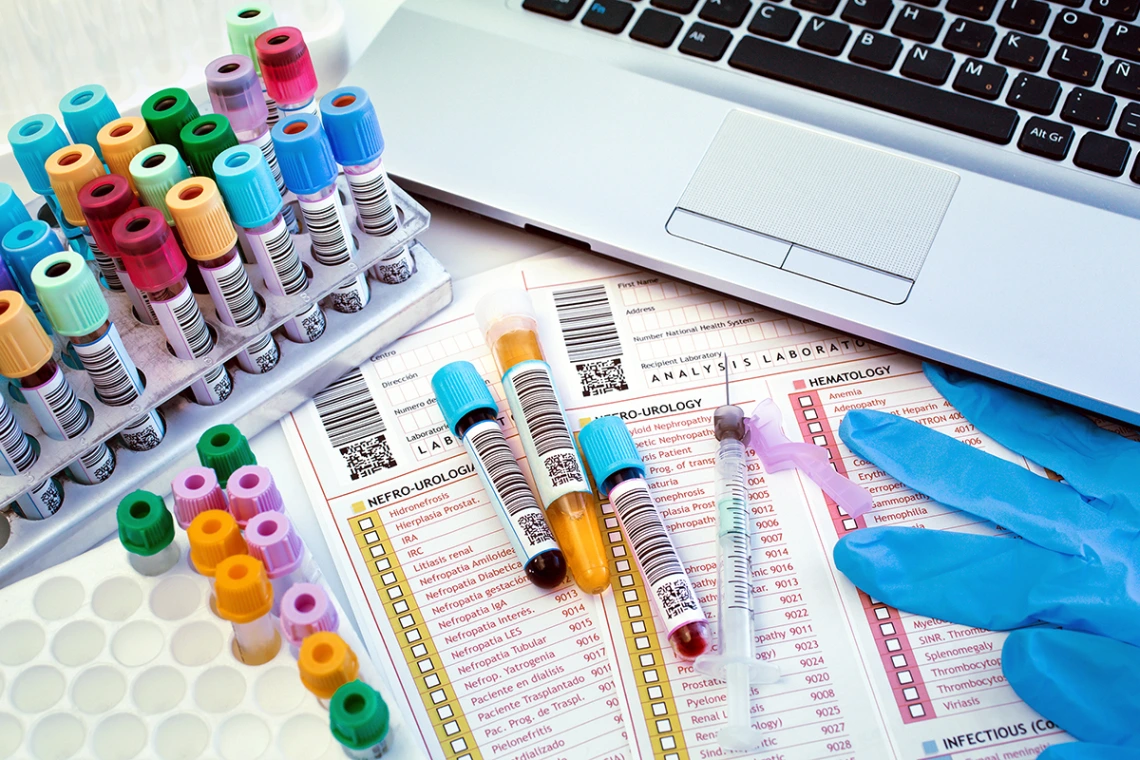Ushering in a New Era of Biobanking

Medical and scientific studies, once the exclusive territory of those in the science community, are now everywhere – the news, social media posts, blogs and podcasts. This has been especially true since the onset of the coronavirus pandemic. But where does this data come from? How do researchers track and store it, and use it to create those reports you’ve seen on the evening news?
Behind every medical research study is a biobanking platform. Since 2009, the University of Arizona (UArizona) has utilized TissueMetrix for this purpose. But beginning in early spring of 2023, University of Arizona Health Sciences (UAHS) will be switching to OpenSpecimen, by Krishagni LLC, as their biobanking platform. The group implementing the change is the UAHS Center for Biomedical Informatics and Biostatistics, or CB2 for short. CB2 supports clinical research at UAHS by helping collect, analyze, and electronically manage research data and biospecimens.
So what is biobanking, exactly? And why is it important? Biobanking is the collection and storage of samples of bodily tissue or fluid for scientific research. These samples are used to improve our understanding of how diseases work in the body.1 In other words, it is a key piece of UAHS’s function as a research institution. Additionally, the establishment of a biobank is a requirement for many grants and programs.2
UArizona’s history with web-based biobanking began with TissueMetrix in 2009, according to Manuel Snyder, CB2’s biobanking director and TissueMetrix administrator.3 Snyder was instrumental in the platform’s initial purchase and has held the administrator role since the beginning. TissueMetrix was originally purchased by The University of Arizona Cancer Center, but has been managed by CB2 since late 2014. While it does provide a centralized system for storing samples, TissueMetrix has its share of limitations–for example, only 25 people can be logged into the application at once. Every user also needs an expensive paid license, which discourages many small-scale and grant-based research groups from using the platform.3 So when the parent company of TissueMetrix, Inspirata, announced in 2020 that they would be sunsetting the platform, it presented both a challenge and an opportunity to find an even better solution to meet UAHS’s biobanking needs.5
In contrast to TissueMetrix, OpenSpecimen will be offered at no cost to all researchers on campus–and the number of users is unlimited. The number of sample collections OpenSpecimen can manage is also limitless, and the platform offers improved configurability, scalability, and a more user-friendly query system.4 “[TissueMetrix] was slow, cumbersome, and difficult to use… OpenSpecimen is fast, agile, more intuitive, flexible and can be integrated with lab assays and lab equipment,” says Dr. David Harris, director of the Health Sciences Biobank.2 Dr. Harris’s group provides specimens and biobanking services not just for UAHS, but for researchers across the country.6 And OpenSpecimen will enable them to do that even more effectively.
Another point in favor of OpenSpecimen is its ability to integrate with Research Electronic Data Capture (REDCap). This is the data capture platform used by UAHS to collect consent forms and demographic information about research study participants.3 Brandon Jernigan, head of IT at the Health Sciences Biobank, says the seamless connection between OpenSpecimen and REDCap means “fewer registration steps when specimens are delivered to the biobank, and fewer opportunities for user error during data entry.”4 OpenSpecimen easily links up with other applications as well. Using its Application Programming Interface (or API), OpenSpecimen can “talk” directly to dozens of other software programs.
UAHS is purchasing both OpenSpecimen’s Enterprise Edition and the Workflow Processing Module – a leap in functionality that will take UAHS biobanking to new heights of efficiency.3 With the WPM, a user can input the standard workflow for a project or task, and the software will walk other users through it, step by step. “This will help immensely with training of new techs,” said Snyder.3 It will also eliminate the need for paper documentation.2
So, how are users going to learn their way around all these new tools? “Training will be a pretty monumental task,” Snyder says. Several training sessions are included with the purchase of the software, and Snyder’s team at CB2 will take over from there. They plan to offer beginner, intermediate and advanced training. Snyder also hopes to hold weekly Q&A Zoom sessions to support adoption of the new system.3
It’s clear that OpenSpecimen will expand what’s possible for researchers at UAHS. Multi-institutional projects and proposals often require a robust biobanking infrastructure. With access to the OpenSpecimen platform and the training and integration provided by CB2, UAHS’s proposals will be much more competitive. The new, extensible system will enable efficient management of samples throughout their lifecycle, opening doors to new studies and proposals.
Having a robust, web-based biobanking database will enable analysis of huge data sets–which, according to Dr. Harris, is the first step in making groundbreaking discoveries in health and science research.2 The speed and capacity of OpenSpecimen could allow the Health Sciences Biobank to become UAHS’s centralized clearinghouse for all biospecimen collections. UAHS may purchase a supply management module for OpenSpecimen, and in the future, could even add modules for integration with Epic or Cerner.3 “Biobanking is just now beginning to expand and will be instrumental in biomarker discovery, development of new therapies, and big data analyses,” says Dr. Harris. And its ability to expand and fulfill its potential depends on “better databases and analytical tools, such as OpenSpecimen.”2
Sources:
1 Healthtalk (2016, February 1). Biobanking - What is biobanking and why is it important? Healthtalk.org. Retrieved November 15, 2022, from tinyurl.com/nx2jpnsn
2 Dr. D. Harris (Director, UAHS Health Sciences Biobank), email correspondence, November 7, 2022.
3 M. Snyder (Biobanking Director, CB2), Interview, October 28, 2022.
4 B. Jernigan (Head of IT, UAHS Health Sciences Biobank), email correspondence, November 7, 2022.
5 C. Kenost (Operations & Support, CB2), email correspondence, October 21 - November 17, 2022.
6 University of Arizona (2021). Biobank. The University of Arizona Health Sciences. Retrieved November 16, 2022, from biobank.uahs.arizona.edu/


